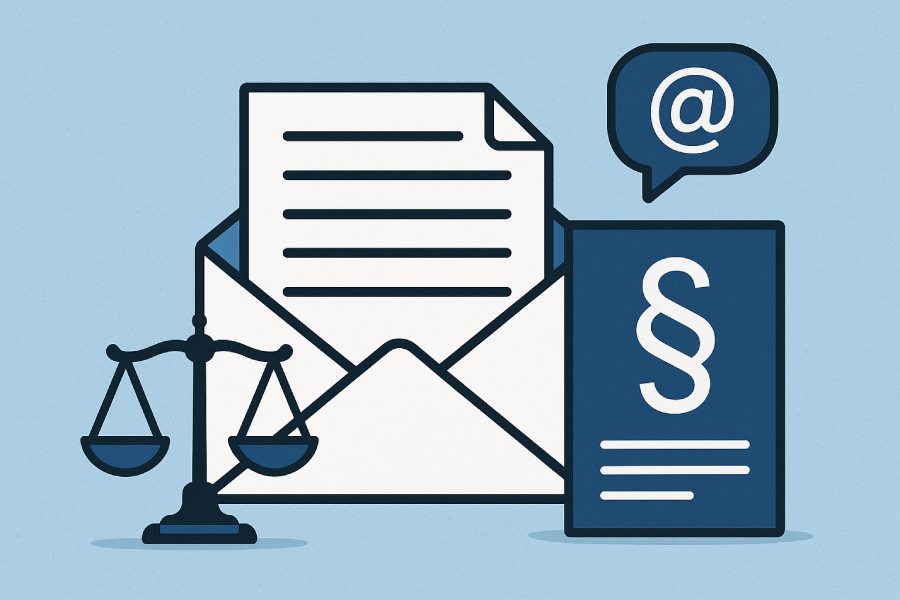Is Cold Emailing Legal? What Every Marketer Needs To Know In 2025
Cold emailing remains one of the most effective ways to reach new prospects—but it’s also surrounded by strict legal and ethical rules. In 2025, marketers must navigate evolving privacy laws and anti-spam regulations to avoid costly penalties. Understanding what makes a cold email legal versus spam is crucial for successful outreach. This guide breaks down everything you need to know to stay compliant. Let’s explore how to send cold emails the right way in 2025.
Understanding Cold Emailing: Definition and Purpose
Cold emailing refers to the practice of sending unsolicited email messages to recipients who have not previously engaged with the email sender or provided explicit consent to receive communications. Commonly used in B2B cold emailing and sales outreach, cold emails aim to initiate contact, generate leads, and promote business products or services. Unlike bulk commercial emails — often sent to consenting subscribers — cold emailing targets potential prospects identified through business email addresses, lead finder tools, or social media platforms such as LinkedIn Sales Navigator.
The core purpose of cold email campaigns is to create initial awareness, foster relationships, and drive conversions. Marketers emphasize email personalization techniques and tailored cold email content to improve email deliverability, move messages from the spam folder to the primary inbox, and increase engagement. Successful cold emailing balances relevance, respecting privacy, and complying with anti-spam laws, ensuring outreach efforts are both effective and legally sound.

The Legal Landscape: Overview of Email Marketing Laws Globally
When navigating cold email legality, understanding global email marketing regulations is crucial. Email marketing compliance requires adherence to different spam laws and privacy regulations, which vary significantly by jurisdiction. Governments worldwide have enacted comprehensive spam laws and anti-spam legislation to combat spam email, protect recipients, and establish fair business practices.
Key jurisdictions with established email legislation include the United States, European Union, United Kingdom, and Canada. These regions enforce strict rules on commercial email messages, unsolicited email, opt-out mechanisms, and sender identification. Compliance covers not only the content of an email, such as clear email subject lines and non-deceptive subject lines, but also technical requirements like accurate email header information and the inclusion of physical address and contact information.
Marketers who fail to comply with these spam laws may face legal penalties for spam, damage to email sender reputation, and email deliverability challenges. Hence, understanding how cold email vs spam distinctions are defined under these regulations is critical for any email marketing strategy involving cold outreach.

CAN-SPAM Act: Key Provisions and Compliance Requirements
The CAN-SPAM Act, enacted in 2003, is the primary piece of United States email marketing law regulating commercial emails, including unsolicited email. It establishes national standards aimed at curbing spam email and promoting transparency in email communications.
Core Provisions of the CAN-SPAM Act
- No Deceptive Subject Lines or Header Information: The email subject lines and email header information must accurately reflect the content and sender.
- Clear Identification: Commercial emails must include a valid physical address or business address for the email sender.
- Opt-Out Mechanism: Every message must contain a clear, conspicuous email opt-out option or unsubscribe link that allows the recipient to stop future emails.
- Timely Opt-Out Compliance: Opt-out requests must be honored promptly, typically within 10 business days.
- Disclosure Obligations: Commercial emails should be identified as advertisements or solicitations unless prior consent exists.
The Federal Trade Commission enforces the CAN-SPAM Act, and violations can lead to substantial fines and restrictions. While the CAN-SPAM Act permits sending cold emails, marketers must ensure their campaigns meet these legal requirements to avoid being classified as spam email under U.S. law.
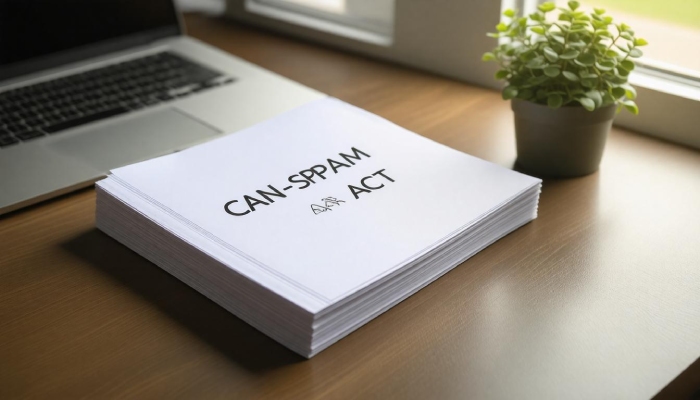
GDPR and Cold Emailing: What Marketers in the EU Must Know
For marketers operating in or targeting recipients within the European Union, the General Data Protection Regulation (GDPR) significantly influences cold email legality. Unlike the CAN-SPAM Act, GDPR imposes stringent privacy regulations centering on data protection, consent, and individual rights.
Key GDPR Requirements for Cold Emailing
- Lawful Basis for Processing: Marketers must have lawful grounds—such as explicit consent or legitimate interests—to process email recipients’ personal data.
- Explicit Consent vs Implied Consent: Cold emails are generally considered unsolicited email, and explicit consent is the preferred legal basis under GDPR. However, legitimate interests may apply in specific B2B contexts, especially when contacting business email addresses.
- Transparency and Data Subject Rights: Marketers must provide clear information about data use, enable access and correction rights, and facilitate the email opt-out process.
- Data Minimization and Security: Email list hygiene and email data security are essential to protect recipient information and reduce exposure to breaches.
Non-compliance with GDPR can result in severe legal penalties for spam violations and jeopardize email sender reputation. Email marketing compliance in the EU requires an updated understanding of privacy regulations combined with cold email best practices that respect recipients’ rights.
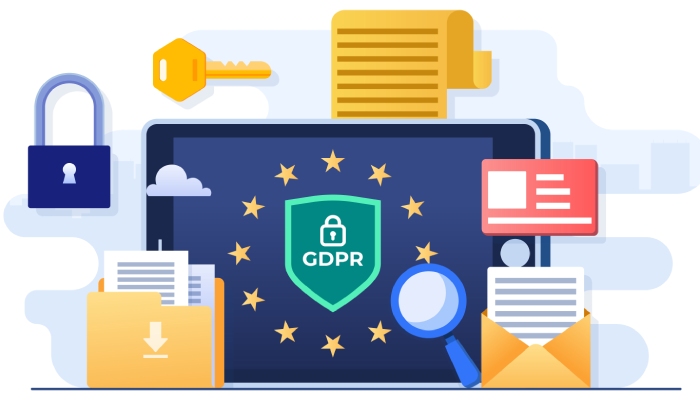
The Impact of the ePrivacy Directive and Upcoming Regulations
Complementing GDPR, the Privacy and Electronic Communications Regulations (PECR) govern electronic communications, including email marketing within the United Kingdom and European Union. PECR sets specific rules related to electronic privacy, focusing on unsolicited emails and the use of cookies or tracking technologies.
PECR and Cold Emailing Compliance
- Prior Consent Requirements: PECR generally demands prior consent before sending unsolicited commercial emails to personal email addresses. However, exemptions exist for corporate email addresses if the message relates to similar products or services.
- Unsubscribe Link and Contact Information: Emails must include a functional unsubscribe link and contact details, aligning with GDPR mandates.
- Transparency and Sender Identification: Proper identification of the email sender and avoidance of spam characteristics are crucial to maintaining compliance.
Looking ahead, the ePrivacy Regulation is expected to replace PECR with updated provisions addressing new email marketing challenges, digital privacy rights, and stricter consent mandates. Marketers should stay informed about these evolving email laws by country and anticipate enhanced email marketing compliance requirements.

Canadian Anti-Spam Legislation (CASL) and Other Jurisdictions
In addition to the United States and Europe, Canada imposes its own stringent anti-spam laws under the Canadian Anti-Spam Legislation (CASL). CASL requires express consent before sending commercial emails to both personal and business email addresses, with rigorous enforcement and penalties for violations.
Sales professionals leveraging tools like EmailChaser and Salesmate must incorporate domestic and international anti-spam laws into their cold email campaigns to ensure email outreach adheres to legal standards across all relevant markets.
In summary, is cold emailing legal? The answer lies in understanding and respecting the complex web of global anti-spam laws, privacy regulations, and email marketing consent standards. Effective cold email campaigns hinge upon compliance with key legislation such as the CAN-SPAM Act, GDPR, PECR, and CASL, alongside best practices that avoid spam characteristics, provide clear opt-out options, and maintain email sender transparency. This legal awareness, combined with strategic email personalization and email list hygiene, propels successful, compliant email communication in 2025 and beyond.
Differences Between Soft Opt-In and Cold Emailing
Understanding the distinction between soft opt-in and cold emailing is crucial when evaluating the legal landscape of unsolicited emails. Soft opt-in refers to a scenario where recipients have an existing relationship with the sender—either by purchasing a product or service or by negotiating a sale—and, as a result, have given implied consent to receive marketing communications. This consent, while not explicit, permits the sender to engage in limited email marketing, provided that recipients are given a clear opt-out option in every message.
In contrast, cold emailing involves contacting individuals or businesses without any prior relationship or consent. These emails are unsolicited and often sent to business email addresses or personal email addresses gathered through various sources such as lead generation tools like LinkedIn Sales Navigator or Lead Finder.

Cold emails are typically associated with commercial emails designed for sales outreach or brand awareness but may raise greater legal concerns because the recipients have not explicitly or implicitly consented to receive messages.
Unlike soft opt-in, which is often protected under certain exemptions within email marketing laws, cold emailing hinges on strict compliance with anti-spam laws such as the CAN-SPAM Act in the United States, Privacy and Electronic Communications Regulations (PECR) in the United Kingdom, and CASL in Canada. Significantly, while soft opt-in permits certain leniencies regarding email consent, cold email legality is far more regulated, demanding adherence to explicit rules about sender identification, clear unsubscribe link provision, and truthful email subject lines.
Consent vs. Legitimate Interest: Legal Bases for Cold Emailing in 2025
As email regulations evolve globally, understanding the frameworks governing cold emailing becomes vital, especially regarding consent and legitimate interest—two key legal bases under the General Data Protection Regulation (GDPR) and related privacy laws.
Explicit and Implied Consent
In many jurisdictions, including the European Union, email marketing consent must be explicit; recipients must take a clear affirmative action to permit sending commercial messages. This means cold emails sent without prior consent risk being classified as spam email, exposing the sender to penalties under anti-spam laws such as GDPR and CASL. However, in some cases, implied consent may apply, particularly where there is a reasonable expectation of communication based on prior engagement, though this is rare and strictly defined.
Legitimate Interest
Alternatively, legitimate interest provides a lawful basis for sending cold emails without explicit consent, often utilized by business email senders in B2B contexts. Under this framework, companies must balance their interest in contacting potential clients against the privacy rights of recipients. They must demonstrate that the communication is necessary, relevant, and conducted transparently, ensuring email compliance by including options to opt-out, clear identification of the sender, and ensuring recipients’ rights are respected.
It’s important to note that legitimate interest is subject to interpretation by regulatory authorities, so ongoing email compliance tips, including maintaining proper documentation of risk assessments, are advised. In the United States, the CAN-SPAM Act requires senders to honor unsubscribe requests promptly and prohibits deceptive headers and subject lines regardless of the legal basis relied upon.

How to Craft Legally Compliant Cold Emails: Best Practices
Ensuring cold email campaigns meet email marketing compliance and comply with anti-spam laws requires meticulous attention to detail in email composition and delivery processes.
- Clear Identification and Transparency: Every cold email must clearly identify the email sender and include valid contact information, such as a business address or physical address, to comply with CAN-SPAM Act and similar regulations in other jurisdictions. This transparency fosters trust and reduces the risk of classification as spam.
- Accurate and Non-Deceptive Email Subject Lines: Avoiding deceptive subject lines or misleading header information is a legal requirement. Subject lines should accurately reflect the email’s content to prevent the email from being flagged as spam or violating provisions under federal or international spam laws.
- Inclusion of an Unsubscribe Link: An easy-to-use email opt-out option in every message—including a prominent unsubscribe link—is mandatory under most anti-spam legislation. This process must be straightforward, with unsubscribe requests honored promptly, ideally within ten business days, to maintain compliance with the CAN-SPAM Act and equivalents.
- Personalization and Email Content: Incorporating email personalization techniques not only improves engagement but helps distinguish cold emails from generic spam email. Tailoring content relevant to the email recipients’ interests and business needs is aligned with cold email best practices and supports better email deliverability by reducing spam complaints.
- Email Signature and Contact Details: Including an appropriate email signature with your full contact details and, where applicable, links to your privacy policy enhances credibility and compliance. It signals professionalism and commitment to privacy, both crucial for maintaining a positive email sender reputation.
How to Handle Opt-Out Requests and Maintain Compliance
Managing opt-out requests effectively is crucial for maintaining email compliance and preserving the reputation of your cold email campaigns. Under the CAN-SPAM Act and similar anti-spam laws worldwide, providing a clear and accessible unsubscribe link or email opt-out option in every cold email is mandatory. This legal requirement applies to all commercial emails and bulk emails, regardless of whether recipients have explicitly provided consent.
Implementing a Clear Opt-Out Process
To ensure compliance with cold email legality, the opt-out process should be straightforward and prompt. The unsubscribe link must be easy to locate—usually placed in the email footer alongside the email signature and physical business address. Once a recipient opts out, businesses are legally required to honor that request within a reasonable timeframe, typically 10 business days under the CAN-SPAM Act. Failure to remove email recipients promptly can lead to violations of anti-spam laws and potential legal penalties for spam.
Maintaining Accurate Opt-Out Lists
Effective email list hygiene involves maintaining an updated opt-out list that mechanisms such as email marketing software or Customer Relationship Management (CRM) platforms like Salesmate or EmailChaser can automate. Regular cleaning of business email addresses and personal email addresses ensures that cold emailing campaigns avoid sending unsolicited email to those who have opted out, reducing complaints and improving email deliverability by steering messages clear of the spam folder.

Compliance Beyond Opt-Out
Beyond providing an unsubscribe link, businesses engaged in sales outreach using cold email campaigns should carefully address email personalization techniques and include truthful email header information to avoid the appearance of spam email. Transparency about the email sender, including accurate contact information and a business address, contributes to email marketing compliance and strengthens cold email legitimacy, distinguishing it from spam characteristics.
Penalties and Legal Risks of Non-Compliance in Different Jurisdictions
Non-compliance with email legislation can lead to significant penalties and legal risks, varying by jurisdiction but universally severe enough to deter spam and protect email recipients.
United States: CAN-SPAM Act Enforcement
In the United States, the CAN-SPAM Act, enforced by the Federal Trade Commission (FTC), imposes fines of up to $46,517 per violation of anti-spam laws. Legal penalties for spam often arise from sending deceptive subject lines or omitting an unsubscribe link. Businesses that repeatedly engage in sending spam email or fail to honor opt-out requests risk escalating fines, litigation, and damage to the email sender’s reputation.
European Union: GDPR and PECR
In the European Union, cold email legality is more stringent under the General Data Protection Regulation (GDPR) and the Privacy and Electronic Communications Regulations (PECR). Violations of GDPR’s strict consent requirements, which often require explicit consent before sending commercial emails, can result in fines reaching up to €20 million or 4% of global annual turnover.
PECR also mandates clear opt-out options and privacy safeguards, reinforcing anti-spam legislation across member countries. Tools like Nureply can help marketers stay compliant by automating personalization and consent management while ensuring GDPR-friendly outreach practices.
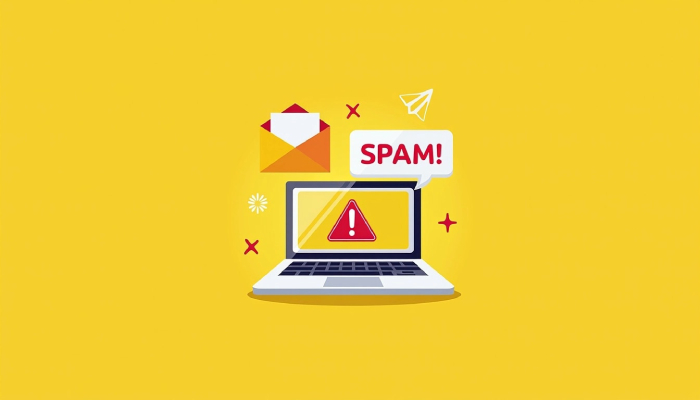
United Kingdom: PECR and Data Protection Act
The United Kingdom follows PECR and UK’s Data Protection Act, both of which align closely with GDPR principles but include specific provisions for cold emailing. The Information Commissioner’s Office (ICO) actively enforces compliance, and businesses sending spam or unsolicited emails without adequate consent risk penalties including monetary fines and enforcement notices.
Canada: CASL Enforcement
Canada’s Anti-Spam Legislation (CASL) is widely regarded as one of the strictest anti-spam laws. CASL requires express consent for sending commercial emails and includes detailed provisions regarding message content, including identification of the email sender and unsubscribe mechanisms. Non-compliance can lead to fines up to CAD 10 million for businesses and CAD 1 million for individuals.
Summary of Risks
Across these jurisdictions, risks include:
- Legal penalties and fines.
- Damage to email sender reputation.
- Increased likelihood of emails being filtered to the spam folder.
- Potential litigation and enforcement actions by regulators.
Adhering to email marketing compliance best practices reduces exposure to these risks.
Future Trends: Emerging Laws and Their Potential Impact on Cold Emailing
As the landscape of email marketing and cold emailing evolves, new laws and regulations are emerging globally to tighten spam laws and enhance privacy protections.
Increasing Focus on Explicit Consent
Many jurisdictions are moving toward requiring explicit consent rather than implied consent for commercial emails. This shift impacts cold email legality by potentially limiting the volume of cold emails that can be sent legally without prior permission, affecting lead generation strategies and email outreach approaches.
Stricter Enforcement and Higher Penalties
Globally, regulators such as the FTC, ICO, and Canadian Radio-television and Telecommunications Commission (CRTC) are intensifying enforcement actions against spam. Penalties are increasing, and organizations face greater scrutiny over email data security and privacy regulations compliance, including adherence to GDPR and CASL.
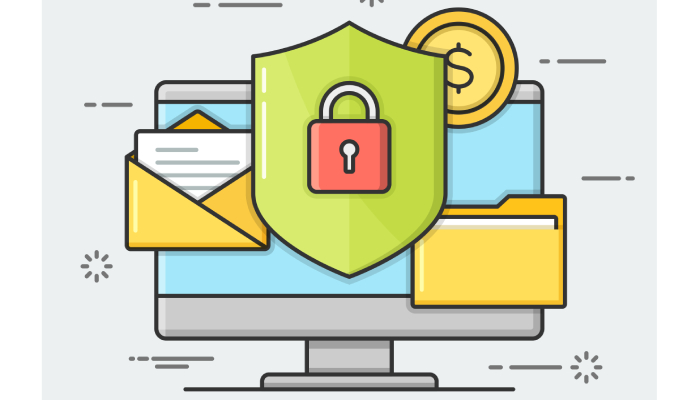
Technological Advances and Email Filtering
Improvements in spam detection technologies and email marketing software mean that even borderline cold email content risks being filtered to the spam folder or flagged by platforms like Gmail and Outlook. Incorporating personalization and precise email targeting along with adherence to legal requirements will be more crucial to ensuring emails reach the primary inbox.
Emerging Legislation
Several countries are adopting or updating Anti-Spam Legislation (ASL) to align with global standards, adding requirements such as detailed email marketing consent documentation and mandates for transparent email header information. The United Kingdom’s post-Brexit email laws continue to tweak PECR requirements, and the United States is under discussions to enhance the CAN-SPAM Act.
Sales professionals and marketers must stay informed about changing email laws by country and adjust their cold emailing strategies accordingly, leveraging compliant email marketing software to ensure ongoing compliance and maximize campaign effectiveness.
FAQs
Is cold emailing legal?
Yes, cold emailing is legal when conducted in compliance with anti-spam laws such as the CAN-SPAM Act in the United States, General Data Protection Regulation(GDPR) in the European Union, CASL in Canada, and PECR in the UK. Compliance includes providing opt-out options, truthful sender information, and avoiding deceptive subject lines.
What constitutes spam vs cold email?
Spam is unsolicited email sent without regard for consent or opt-out requests and often includes deceptive content. Cold emails are unsolicited but comply with legal requirements such as opt-out mechanisms and truthful sender information, distinguishing them from spam.
How quickly must I honor opt-out requests?
Under most anti-spam laws like the CAN-SPAM Act, email senders must process opt-out requests within 10 business days to maintain email compliance and avoid legal penalties.
What are the penalties for sending spam emails?
Penalties vary by jurisdiction but can include fines ranging from thousands to millions of dollars, legal action from regulators, and damage to the sender’s reputation leading to poor email deliverability and blacklisting.
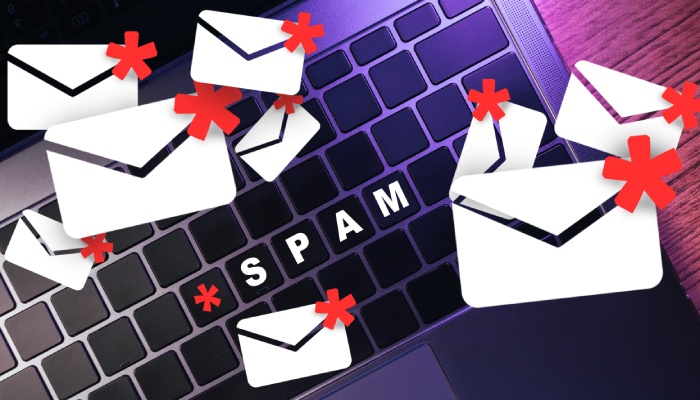
Can I send cold emails without explicit consent?
This depends on the region. For example, the United States and Canada typically require explicit consent or at least implied consent under certain conditions, while the GDPR mandates explicit consent for commercial emails in the EU, making cold emailing without prior consent risky.
How can I ensure my cold email campaign complies with anti-spam laws?
Ensure your cold emails include an easy unsubscribe link, accurate sender information, business address, and honor opt-out requests promptly. Use email personalization and segmentation to improve email relevance and avoid characteristics of spam.
What are some cold email best practices to avoid the spam folder?
Use clear subject lines, avoid deceptive headers, maintain clean email lists, personalize content, respect opt-out requests, and include accurate contact information to improve email deliverability to the primary inbox.

